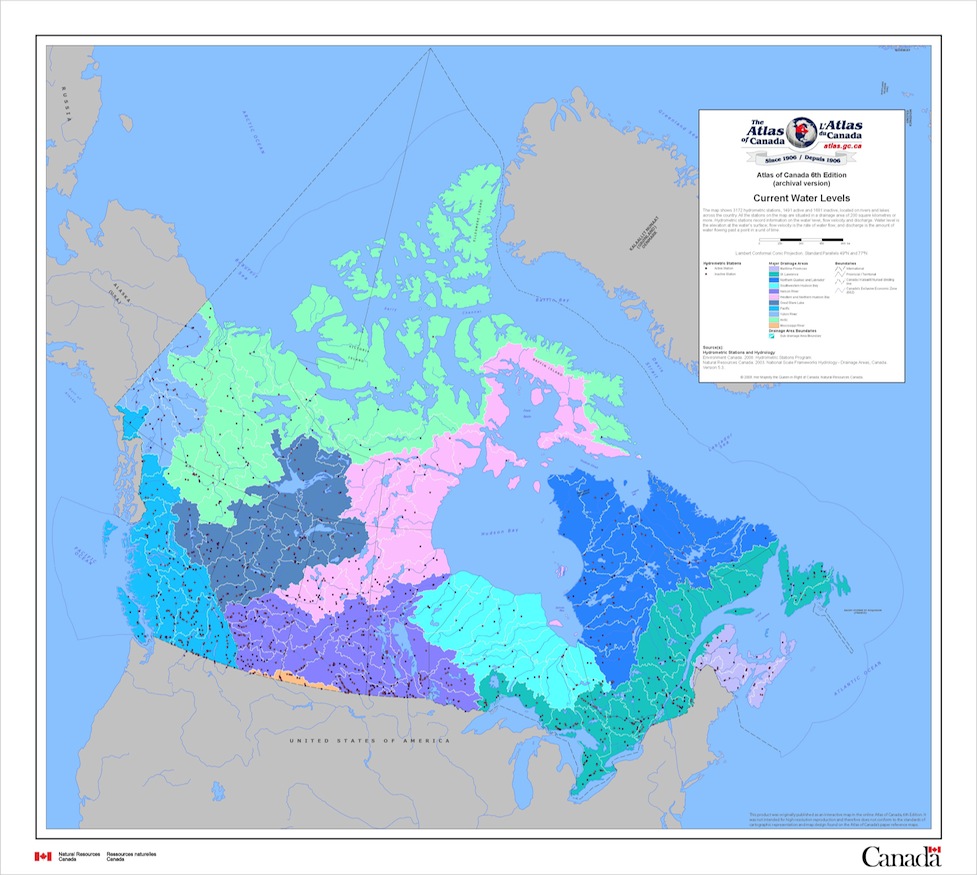
Canada (The Atlas of Canada, 2008).
Click figure for larger image.
Lakes cover approximately 2% of the Earth’s surface, with a large concentration located in the Northern Hemisphere. Water surfaces make up 20-40% of the Canadian Arctic land surface (Figure 1). Great Bear Lake and Great Slave lake are the two largest lakes in this region, with volumes of 31,000km2 and 28,500km2 respectively. Both of these lakes are greater than 400 meters in depth (Serreze & Barry, 2005; Brown & Duguay, 2010).
In the Northern Hemisphere, it is estimated that large lakes make up an area of 790,000 km2 with an ice volume peak of approximately 560km3. Moreover, small and medium sized lakes cover an 800,000km2 of the Northern Hemisphere, with a peak ice cover of 860km3. Generally, lakes of smaller volume have a larger lake volume to lake ice ratio. This occurs because lakes of smaller volume can more readily freeze over during the winter season than larger lakes (Brooks, Prowse & O'Connell, 2013).
References
Lake Ice Links
Material on this page was provided by Maren Pauly, Department of Geography, University of Waterloo.
